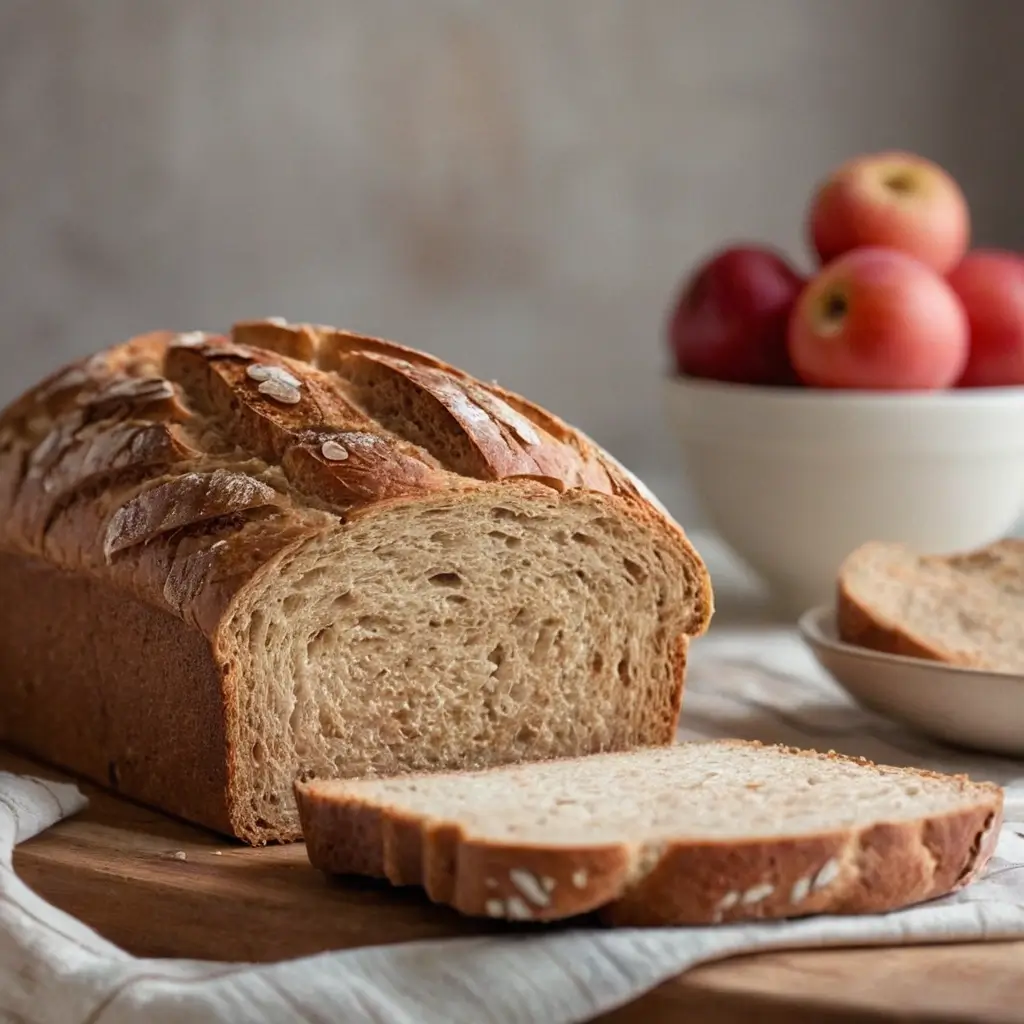Introduction
Cottage cheese bread is a soft, flavorful, and protein-packed alternative to traditional bread. Made with simple ingredients, this recipe offers a moist texture, rich taste, and nutritional benefits that make it a great choice for breakfast, snacks, or even as a side dish.
Unlike regular bread, cottage cheese bread is higher in protein and often lower in carbohydrates, depending on the ingredients used. It can be customized with various add-ins like seeds, herbs, or even a touch of sweetness with honey or cinnamon.
This recipe is easy to prepare, requires minimal ingredients, and can be adapted to suit different dietary needs, including gluten-free and low-carb diets. Whether you bake it in the oven or air fryer, the result is a satisfying, fluffy loaf with a delightful tang from the cottage cheese.
In this guide, we’ll explore the benefits of cottage cheese bread, step-by-step instructions, expert tips, and delicious variations to help you make the perfect loaf at home.
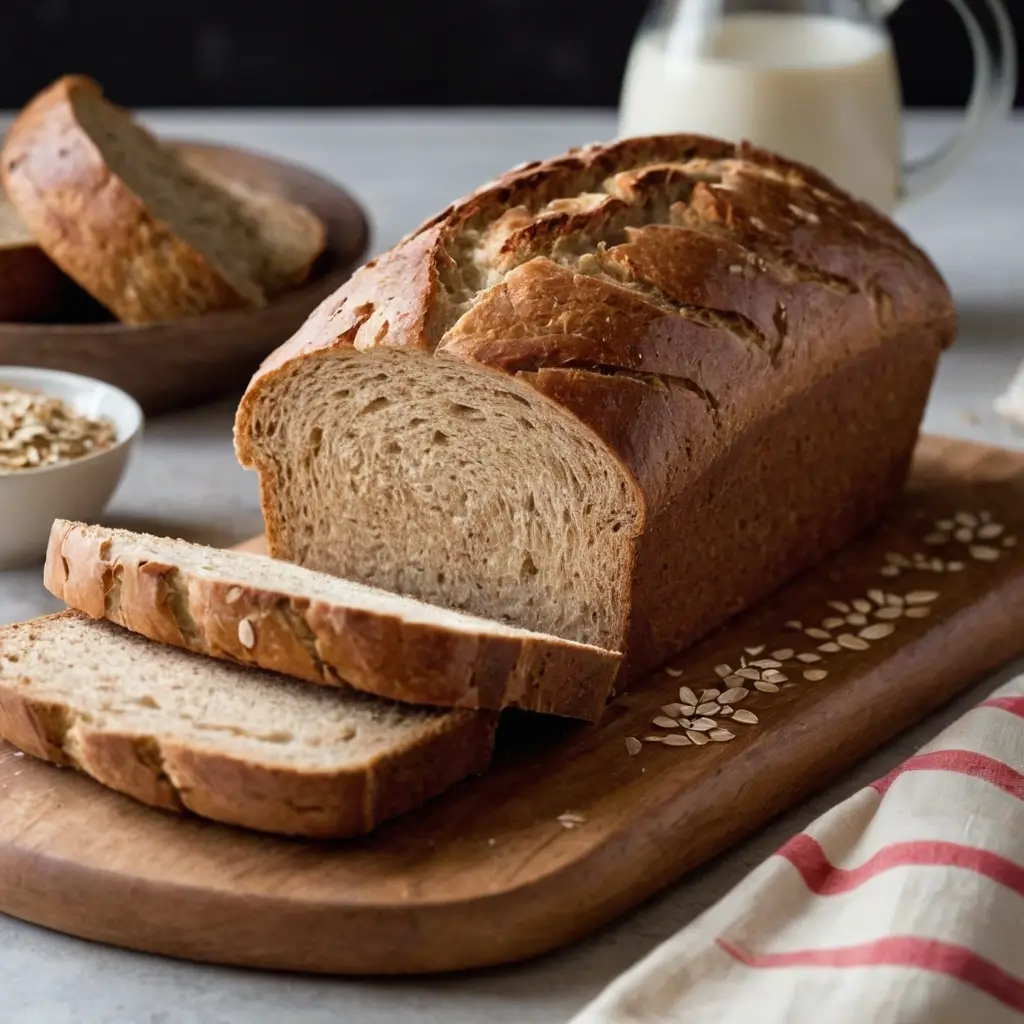
Key Benefits
Cottage cheese bread is more than just a tasty alternative to traditional loaves—it’s packed with nutritional benefits that make it a smart choice for various diets. Here’s why you should consider adding it to your meal plan:
1. High in Protein
Cottage cheese is an excellent source of protein, making this bread ideal for those looking to increase their protein intake. Unlike standard white or wheat bread, which primarily contains carbohydrates, cottage cheese bread provides a balanced mix of protein and healthy fats, keeping you fuller for longer.
2. Low in Carbohydrates (Keto-Friendly Option Available)
Depending on the recipe variation, cottage cheese bread can be significantly lower in carbs than traditional bread. By using almond flour or coconut flour instead of all-purpose flour, you can create a keto-friendly version that supports low-carb and diabetic-friendly diets.
3. Naturally Moist and Fluffy Texture
The creamy texture of cottage cheese adds moisture to the bread, eliminating the need for excessive butter or oil. This results in a soft, tender crumb that remains fresh longer than typical homemade bread.
4. Supports Gut Health
Cottage cheese contains probiotics, which can promote gut health and digestion. Using whole grains or seeds in the recipe further enhances fiber content, supporting a healthy digestive system.
5. Easy to Customize
Cottage cheese bread is versatile—you can add fresh herbs like dill or rosemary for a savory twist or mix in blueberries or cinnamon for a slightly sweet variation. It also pairs well with both sweet and savory toppings, from avocado to honey drizzle.
6. Suitable for Gluten-Free Diets
If you use gluten-free flour or a flourless blend, cottage cheese bread can be completely gluten-free, making it a great choice for those with gluten sensitivities or celiac disease.
7. Simple and Quick to Make
With minimal ingredients and an easy preparation process, this bread is perfect for busy individuals who want homemade, healthy options without spending hours in the kitchen. Some versions even require just two ingredients—cottage cheese and eggs—making it one of the simplest high-protein breads you can make.
In the next section, we’ll dive into the essential ingredients you need to make this delicious and nutritious cottage cheese bread at home.
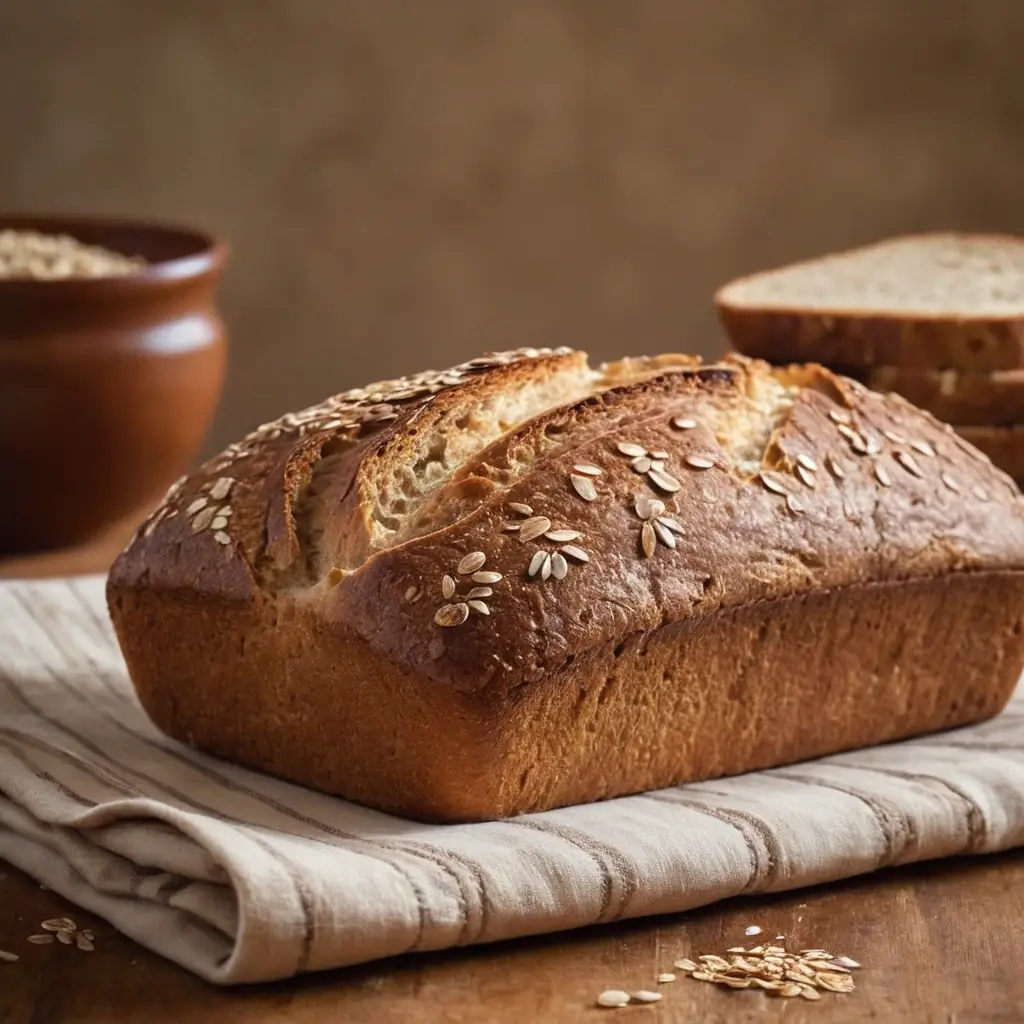
Ingredients you will need
Cottage cheese bread requires simple, wholesome ingredients that come together to create a nutritious and delicious loaf. Below is a list of the essential ingredients, along with some optional add-ins for customization.
Basic Ingredients
- Cottage Cheese – Provides moisture, protein, and a slightly tangy flavor. Use full-fat, low-fat, or even lactose-free cottage cheese based on preference.
- Eggs – Help bind the ingredients together and add structure to the bread.
- Flour – All-purpose flour works well, but for a gluten-free option, use almond flour or a gluten-free blend. Coconut flour can also be used, but adjustments in liquid content may be needed.
- Baking Powder – Acts as a leavening agent to give the bread a light and airy texture.
- Salt – Enhances the flavor and balances the tanginess of the cottage cheese.
Optional Ingredients for Variations
- Honey or Maple Syrup – Adds a mild sweetness for those who prefer slightly sweet bread.
- Garlic Powder – Perfect for a savory twist, especially when paired with herbs.
- Fresh or Dried Herbs – Dill, rosemary, thyme, or basil can elevate the flavor.
- Chia or Flax Seeds – Adds extra fiber and omega-3s for a more nutrient-dense loaf.
- Shredded Cheese – Cheddar, mozzarella, or Parmesan can be added for extra richness.
- Greek Yogurt – Helps enhance moisture and protein content while keeping the bread soft.
Ingredient Substitutions
- Egg-Free Option – Use flax eggs to make the bread vegan-friendly.
- Dairy-Free Version – Replace cottage cheese with blended silken tofu or a dairy-free cheese alternative.
- Keto-Friendly Adaptation – Swap all-purpose flour for almond flour and reduce the baking powder slightly to maintain structure.
With these ingredients, you can create a perfectly balanced cottage cheese bread tailored to your taste and dietary needs. Next, we’ll go through the step-by-step process of making it.
How to make cottage cheese bread
Follow these step-by-step instructions to make soft, flavorful, and protein-packed cottage cheese bread at home.
Step 1: Preheat the Oven
Preheat your oven to 350°F (175°C). Lightly grease a loaf pan with butter or non-stick spray, or line it with parchment paper for easy removal.
Step 2: Blend the Wet Ingredients
In a large mixing bowl, whisk together the cottage cheese and eggs until smooth. If you prefer a finer texture, blend them in a food processor or blender for a few seconds to remove any curds.
Step 3: Combine the Dry Ingredients
In a separate bowl, whisk together the flour, baking powder, and salt. This ensures even distribution of the leavening agent, preventing lumps in the dough.
Step 4: Mix the Batter
Gradually add the dry ingredients to the wet mixture. Stir gently until fully combined. If using add-ins like herbs, cheese, or seeds, fold them in at this stage. Avoid overmixing, as it can make the bread dense.
Step 5: Transfer to the Loaf Pan
Pour the batter into the prepared loaf pan, spreading it evenly. If desired, sprinkle extra seeds, shredded cheese, or herbs on top for added texture and flavor.
Step 6: Bake the Bread
Place the pan in the preheated oven and bake for 35–40 minutes, or until the top turns golden brown and a toothpick inserted in the center comes out clean.
Step 7: Cool Before Slicing
Remove the bread from the oven and let it cool in the pan for 10 minutes. Then, transfer it to a wire rack to cool completely. This helps set the texture and prevents crumbling when slicing.
Alternative Cooking Methods
- Air Fryer Method: Pour the batter into a greased baking dish that fits your air fryer basket. Cook at 320°F (160°C) for 20–25 minutes.
- Flatbread Version: Instead of baking in a loaf pan, spread small portions of the batter on a parchment-lined baking sheet. Bake at 375°F (190°C) for 15–18 minutes for a thinner, crispier texture.
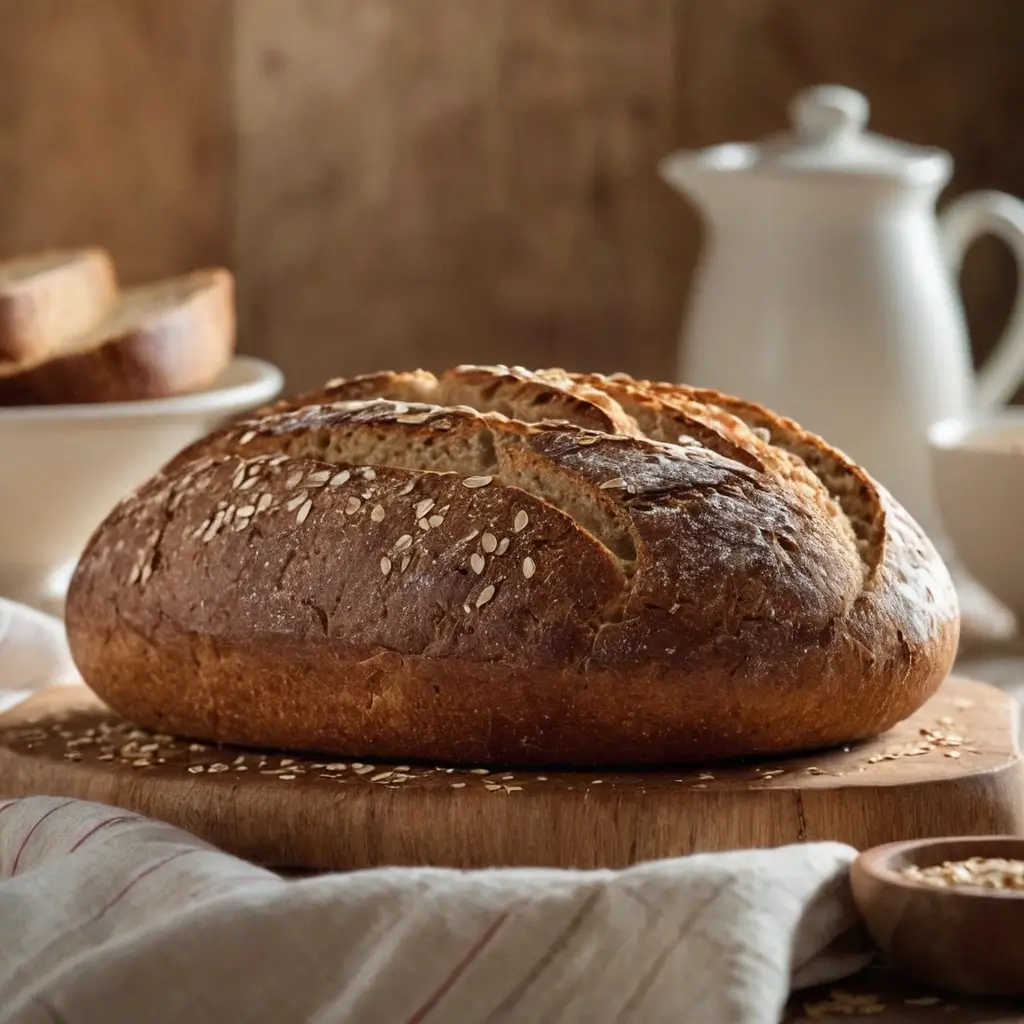
Tips and Variations
Making cottage cheese bread is simple, but a few expert techniques can enhance the flavor, texture, and versatility of your loaf. Here are some pro tips and creative variations to customize your bread to perfection.
Tips for the Best Cottage Cheese Bread
1. Blend the Cottage Cheese for a Smoother Texture
If you prefer a bread with a finer crumb, blend the cottage cheese before mixing it with other ingredients. This removes any curds and ensures a more uniform consistency.
2. Use Room Temperature Ingredients
Cold eggs and cottage cheese can affect the bread’s rise. Let them sit at room temperature for about 15–20 minutes before mixing to achieve better texture and even baking.
3. Don’t Overmix the Batter
Overmixing activates the gluten (if using regular flour), making the bread dense. Stir the ingredients until just combined to maintain a light and fluffy texture.
4. Check for Doneness with a Toothpick
Since cottage cheese bread has high moisture content, the baking time may vary slightly. Insert a toothpick in the center—if it comes out clean or with a few crumbs, the bread is ready. If it comes out wet, bake for an additional 5 minutes and recheck.
5. Let the Bread Cool Completely Before Slicing
Cutting the bread while it’s still warm can cause it to crumble. Allow it to cool on a wire rack for at least 30 minutes for the best texture.
Delicious Variations to Try
1. Keto Cottage Cheese Bread
- Substitute almond flour (1 ½ cups) or a blend of almond and coconut flour for a low-carb version.
- Reduce the baking powder slightly (1 teaspoon) to prevent excessive rise.
2. Gluten-Free Cottage Cheese Bread
- Use a gluten-free flour blend or oat flour instead of all-purpose flour.
- Add 1 teaspoon xanthan gum if your flour blend doesn’t contain it to help with structure.
3. Herb & Garlic Cottage Cheese Bread
- Add 1 teaspoon garlic powder and 1 tablespoon chopped fresh herbs like dill, rosemary, or chives.
- Sprinkle sesame or sunflower seeds on top before baking for added crunch.
4. Sweet Cottage Cheese Bread
- Mix in 1–2 tablespoons honey or maple syrup for a slightly sweet flavor.
- Add ½ teaspoon cinnamon and ¼ cup raisins, blueberries, or chopped nuts for a breakfast-style loaf.
5. Cottage Cheese Flatbread
- Instead of baking in a loaf pan, spread small portions of batter on a parchment-lined baking sheet.
- Bake at 375°F (190°C) for 15–18 minutes, or until golden brown.
- Use it as a wrap, sandwich base, or pizza crust alternative.
These variations make cottage cheese bread incredibly versatile, allowing you to adapt it to your dietary preferences and taste. Next, we’ll look at the best ways to serve and enjoy this high-protein bread.
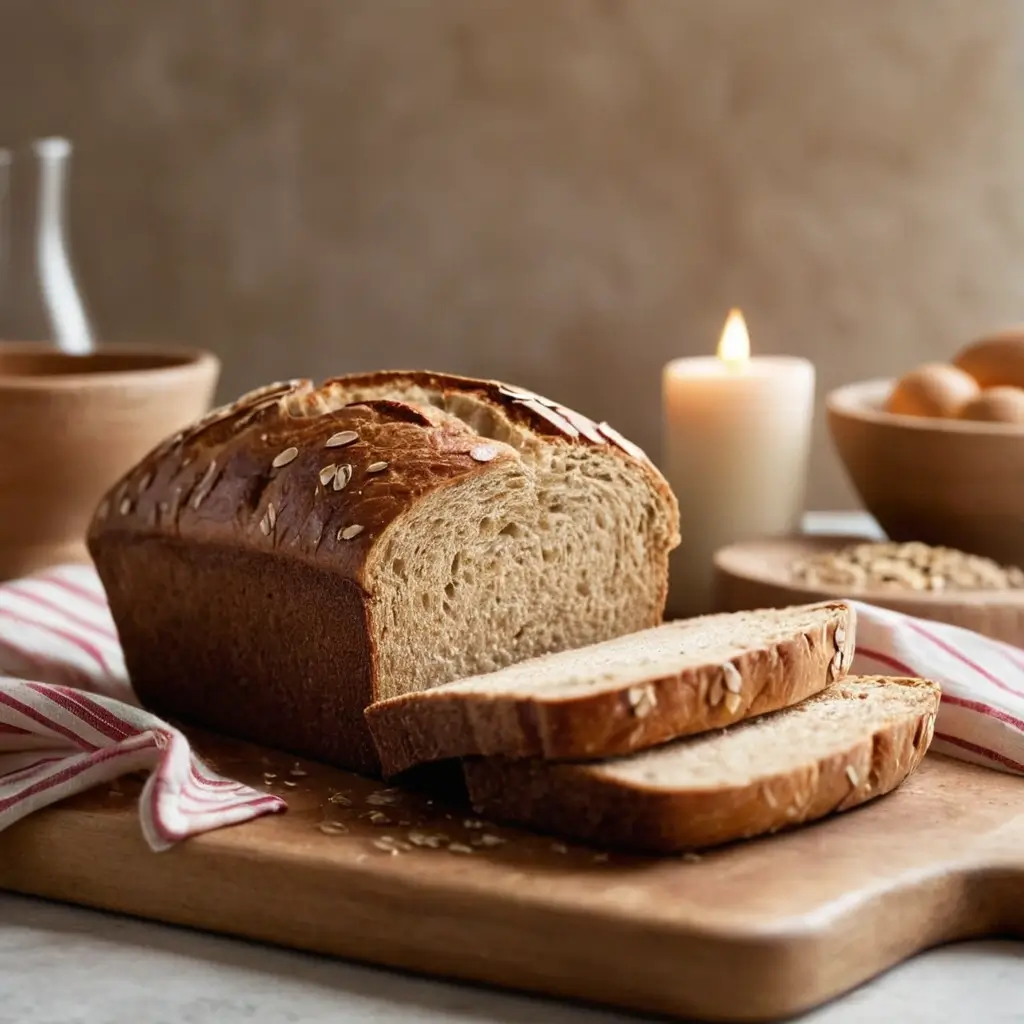
Serving Suggestions
Cottage cheese bread is incredibly versatile and can be enjoyed in many ways, whether you prefer it as a hearty breakfast, a light snack, or a flavorful side dish. Here are some delicious ways to serve it:
1. Classic Toasted with Butter or Jam
- Lightly toast a slice and spread it with butter, cream cheese, or fruit preserves for a simple yet satisfying option.
- Drizzle with honey or maple syrup for a touch of natural sweetness.
2. High-Protein Breakfast Option
- Top a slice with scrambled eggs, avocado, and cherry tomatoes for a balanced, protein-packed meal.
- Spread with Greek yogurt and fresh berries for a refreshing start to the day.
3. Savory Sandwiches & Wraps
- Use slices as a base for a grilled cheese sandwich with cheddar or mozzarella.
- Make an open-faced sandwich with smoked salmon, cream cheese, and dill for a gourmet touch.
- Use the flatbread version to create wraps filled with grilled chicken, hummus, and fresh greens.
4. Side Dish for Soups & Salads
- Serve warm slices alongside a bowl of tomato soup, creamy mushroom soup, or chicken broth for a comforting meal.
- Pair with a Caesar or Mediterranean salad for a light yet satisfying combination.
5. Low-Carb Pizza Alternative
- Use cottage cheese flatbread as a pizza crust, topping it with marinara sauce, cheese, and your favorite toppings before baking until bubbly.
6. Sweet Dessert-Style Option
- Top with almond butter, cinnamon, and banana slices for a naturally sweet treat.
- Make a cottage cheese bread pudding by soaking cubed slices in a milk and egg mixture, then baking with cinnamon and raisins.
Storage & Reheating Tips
- Refrigeration: Store in an airtight container in the fridge for up to 5 days.
- Freezing: Wrap individual slices in plastic wrap and freeze for up to 2 months. Reheat in a toaster or oven before serving.
- Reheating: Warm slices in the oven at 300°F (150°C) for 5–10 minutes or toast for a crispier texture.
Cottage cheese bread is perfect for any meal, whether you enjoy it fresh, toasted, or as part of a creative dish. In the next section, we’ll wrap up with final thoughts on why this recipe is a must-try!
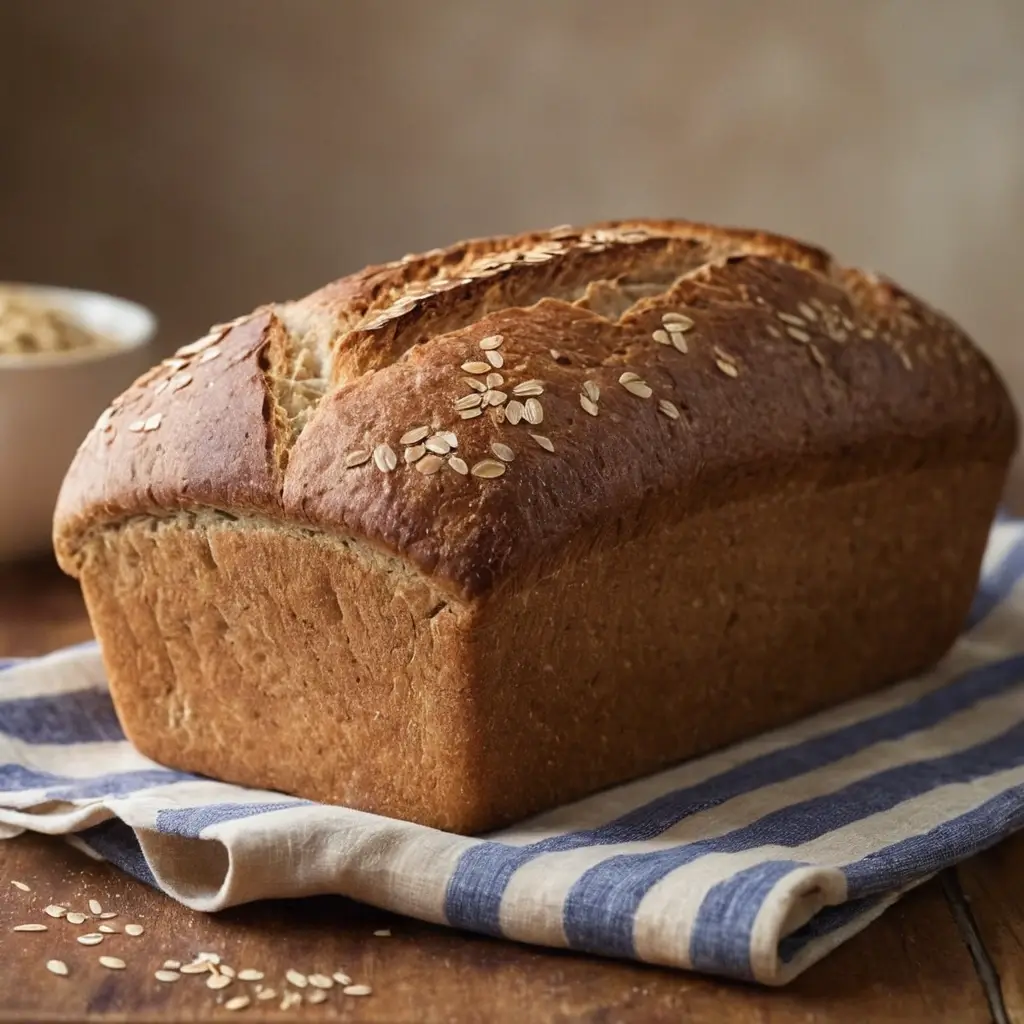
Conclusion
Cottage cheese bread is a game-changer for those looking for a nutritious, high-protein alternative to traditional bread. With its soft texture, rich flavor, and versatility, it fits seamlessly into a variety of meals—whether you enjoy it for breakfast, as a sandwich base, or as a satisfying side dish.
Not only is this bread easy to make, but it also offers numerous health benefits, including higher protein content, lower carbs (depending on the variation), and a naturally moist texture. Plus, it can be customized to suit different dietary needs, from keto and gluten-free options to savory or sweet variations.
Whether you’re new to baking or an experienced cook, this simple yet delicious recipe is worth trying. With just a few ingredients and minimal effort, you can create a homemade loaf that’s both nutritious and satisfying.
Print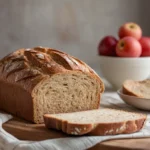
Best Cottage Cheese Bread: A High-Protein, Nutritious, and Delicious Recipe
- Total Time: 45–50 minutes
- Yield: 8
- Diet: Gluten Free
Description
This high-protein cottage cheese bread is soft, moist, and easy to make. It’s perfect for breakfast, sandwiches, or as a side dish. Customize it for keto, gluten-free, or savory variations.
Ingredients
Basic Ingredients
-
Cottage Cheese (1 cup)
-
Eggs (3 large)
-
Flour (1 ½ cups)
-
Baking Powder (1 ½ teaspoons)
-
Salt (½ teaspoon)
Optional Ingredients for Variations
-
Honey or Maple Syrup (1 tablespoon)
-
Garlic Powder (½ teaspoon)
-
Fresh or Dried Herbs (1 teaspoon, chopped)
-
Chia or Flax Seeds (1 tablespoon)
-
Shredded Cheese (½ cup)
-
Greek Yogurt (2 tablespoons)
Ingredient Substitutions
-
Egg-Free Option – Use flax eggs (1 tablespoon flaxseed meal + 2 ½ tablespoons water per egg)
-
Dairy-Free Version – Replace cottage cheese with blended silken tofu or a dairy-free cheese alternative.
Instructions
Step 1: Preheat the Oven
Preheat your oven to 350°F (175°C). Lightly grease a loaf pan with butter or non-stick spray, or line it with parchment paper for easy removal.
Step 2: Blend the Wet Ingredients
In a large mixing bowl, whisk together the cottage cheese and eggs until smooth. If you prefer a finer texture, blend them in a food processor or blender for a few seconds to remove any curds.
Step 3: Combine the Dry Ingredients
In a separate bowl, whisk together the flour, baking powder, and salt. This ensures even distribution of the leavening agent, preventing lumps in the dough.
Step 4: Mix the Batter
Gradually add the dry ingredients to the wet mixture. Stir gently until fully combined. If using add-ins like herbs, cheese, or seeds, fold them in at this stage. Avoid overmixing, as it can make the bread dense.
Step 5: Transfer to the Loaf Pan
Pour the batter into the prepared loaf pan, spreading it evenly. If desired, sprinkle extra seeds, shredded cheese, or herbs on top for added texture and flavor.
Step 6: Bake the Bread
Place the pan in the preheated oven and bake for 35–40 minutes, or until the top turns golden brown and a toothpick inserted in the center comes out clean.
Step 7: Cool Before Slicing
Remove the bread from the oven and let it cool in the pan for 10 minutes. Then, transfer it to a wire rack to cool completely. This helps set the texture and prevents crumbling when slicing.
Alternative Cooking Methods
-
Air Fryer Method: Pour the batter into a greased baking dish that fits your air fryer basket. Cook at 320°F (160°C) for 20–25 minutes.
-
Flatbread Version: Instead of baking in a loaf pan, spread small portions of the batter on a parchment-lined baking sheet. Bake at 375°F (190°C) for 15–18 minutes for a thinner, crispier texture.
- Prep Time: 10 minutes
- Cook Time: 35–40 minutes
- Category: Bread, Side Dish, Breakfast
- Method: Baking
- Cuisine: American, European
Nutrition
- Serving Size: 8
- Calories: 150 kcal
- Sugar: 1g
- Sodium: 250mg
- Fat: 7g
- Carbohydrates: 12g
- Fiber: 1g
- Protein: 10g
Keywords: Cottage cheese bread, high-protein bread, easy homemade bread, keto cottage cheese bread
FAQs
Is cottage cheese good with bread?
Yes! Cottage cheese pairs well with bread, offering a creamy, tangy contrast to its texture. You can spread it on toast, mix it into dough for added moisture and protein, or use it in recipes like cottage cheese bread for a healthier, more filling option.
Can you make flatbread with cottage cheese?
Absolutely! Cottage cheese flatbread is a great alternative to traditional flatbread. By mixing cottage cheese with eggs and flour (or almond flour for a low-carb version), you can create a soft, flexible flatbread that works well for wraps, sandwiches, or even pizza crusts.
What makes cottage cheese bread different?
Cottage cheese bread stands out due to its high protein content, moist texture, and slight tangy flavor. Unlike regular bread, it can be made without yeast and has a naturally tender crumb, making it a great option for those looking for a nutrient-dense alternative.
Is cottage cheese bread good for you?
Yes! Cottage cheese bread is a healthier alternative to traditional bread because it is higher in protein, lower in carbs (depending on the flour used), and contains beneficial nutrients like calcium and probiotics. It’s a great option for those looking to maintain a balanced diet.
Is it okay to eat cottage cheese every day?
Yes, cottage cheese is a healthy source of protein and calcium, making it suitable for daily consumption. However, it’s best to choose varieties with minimal additives and moderate sodium content, especially if you are watching your salt intake.
Is cottage cheese a protein or carb?
Cottage cheese is primarily a protein-rich dairy product. While it does contain a small amount of carbohydrates, the majority of its nutritional value comes from protein and healthy fats, making it a great addition to high-protein diets.
With this comprehensive guide, you now have everything you need to make delicious, nutritious cottage cheese bread. Whether you bake it as a loaf, turn it into flatbread, or experiment with different flavors, this recipe is sure to become a favorite in your kitchen!
